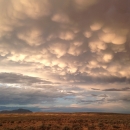Sagebrush Upland Improvement and Riparian Restoration in Douglas County, Washington
Funding Year | Amount | Location |
FY24 | $ 165,000 | Douglas County, Washington |
Project Description
A priority area for Columbia basin pygmy rabbit, sage grouse, and sagebrush sagebrush
The western United States’ sagebrush country encompasses over 175 million acres of public and private lands. The sagebrush landscape provides many benefits to our rural economies and communities, and it serves as crucial habitat for a diversity of wildlife, including the iconic greater sage-grouse and over 350 other species.
Learn more about sagebrush habitat conservation in Washington will have projects implemented in collaboration with several partners to address riparian riparian
Definition of riparian habitat or riparian areas.
Learn more about riparian and wet meadow plantings, early detection rapid response surveys and treatments of invasive plant species, and shrub restoration post-fire in mule deer winter range and migration corridors.
Partners
Pheasants Forever, Foster Creek Conservation District, National Resource Conservation Service, Washington Department of Fish and Wildlife, Chelan Douglas Land Trust, The Nature Conservancy, and USFWS Partners for Fish and Wildlife Program


